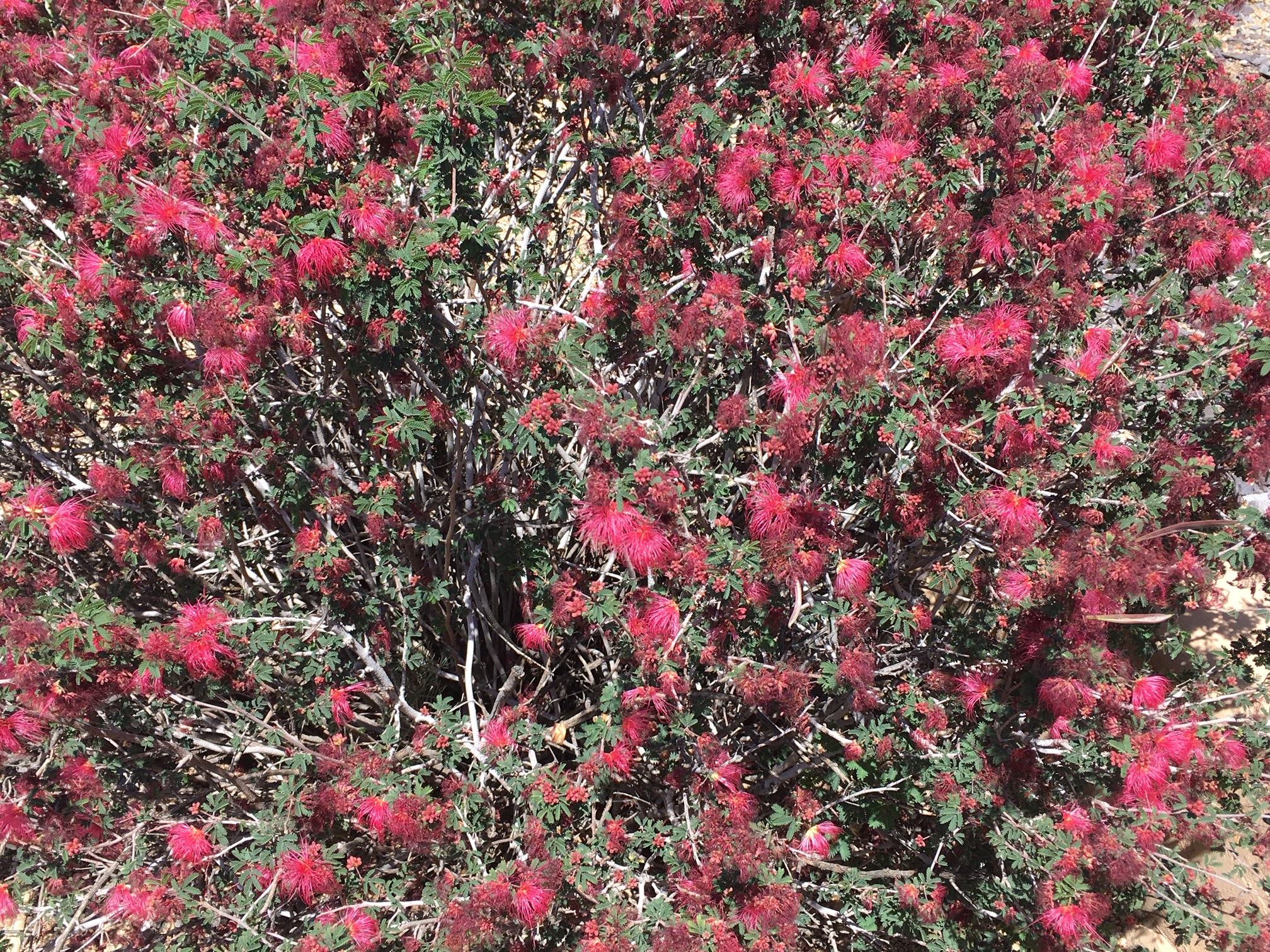What is the name of this plant?
What is it good for?
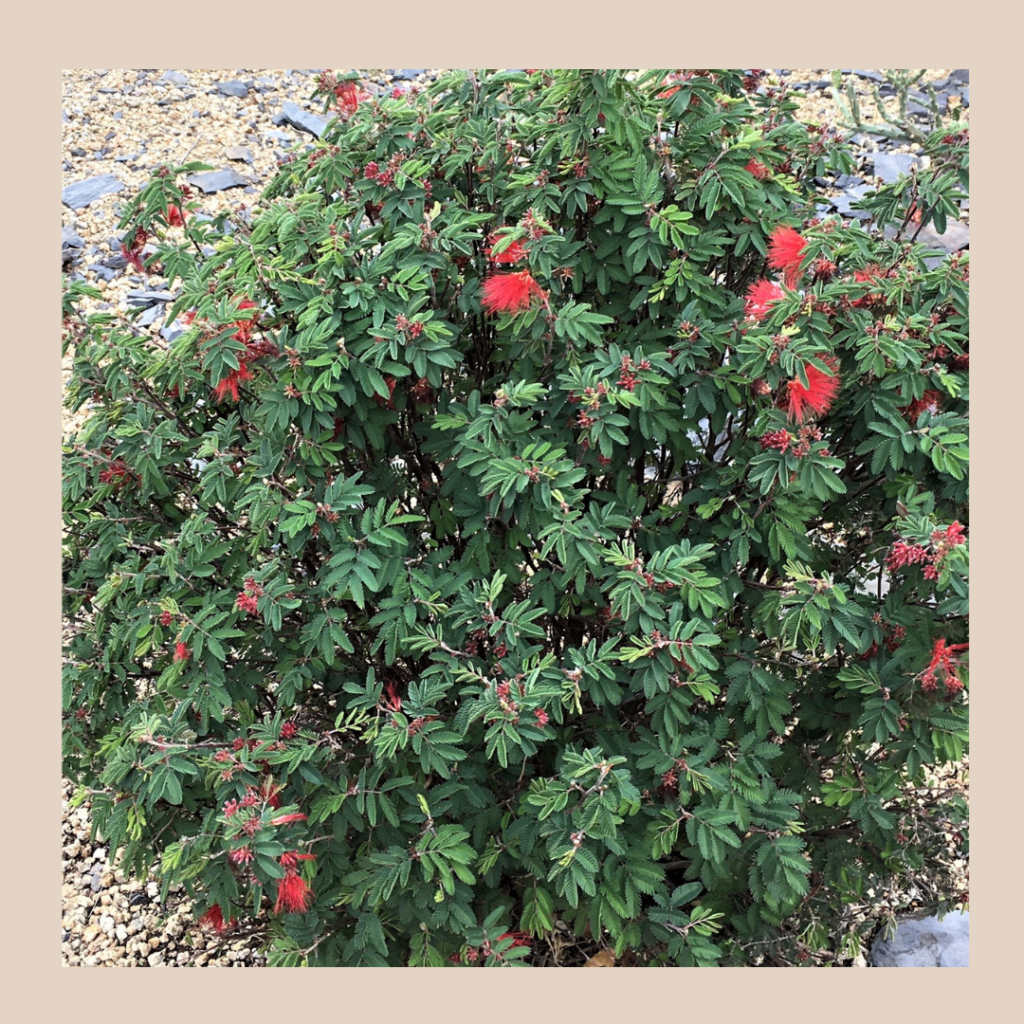
Two of these bushes grow in the condo common area that comprises my front and back yard, and I have always been curious as to what they were called. One of my neighbors called them a “paint brush,” but when I looked that up, it was a different plant. Fortunately, last month’s excursion to the Desert Botanical Garden solved the mystery.
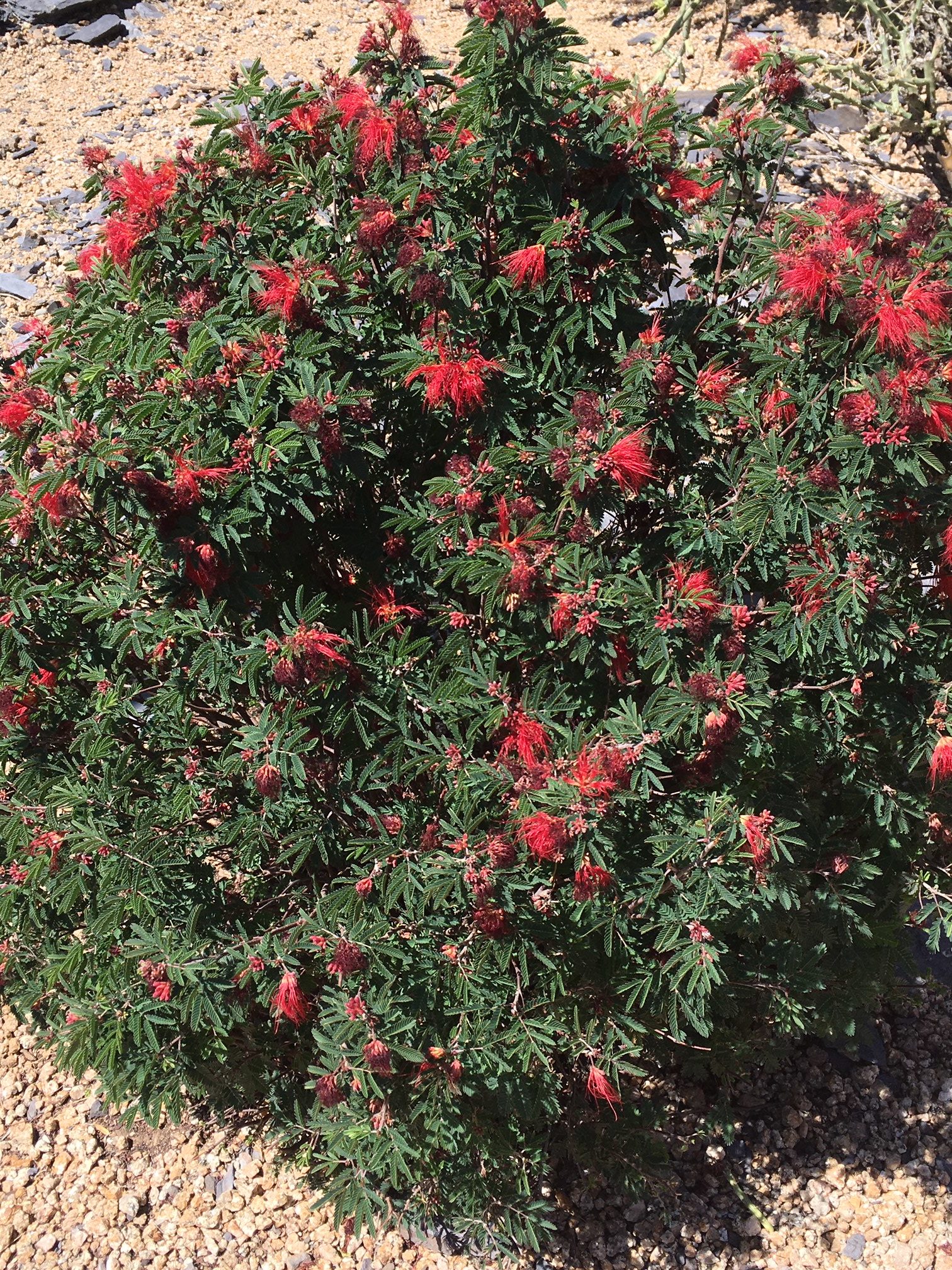
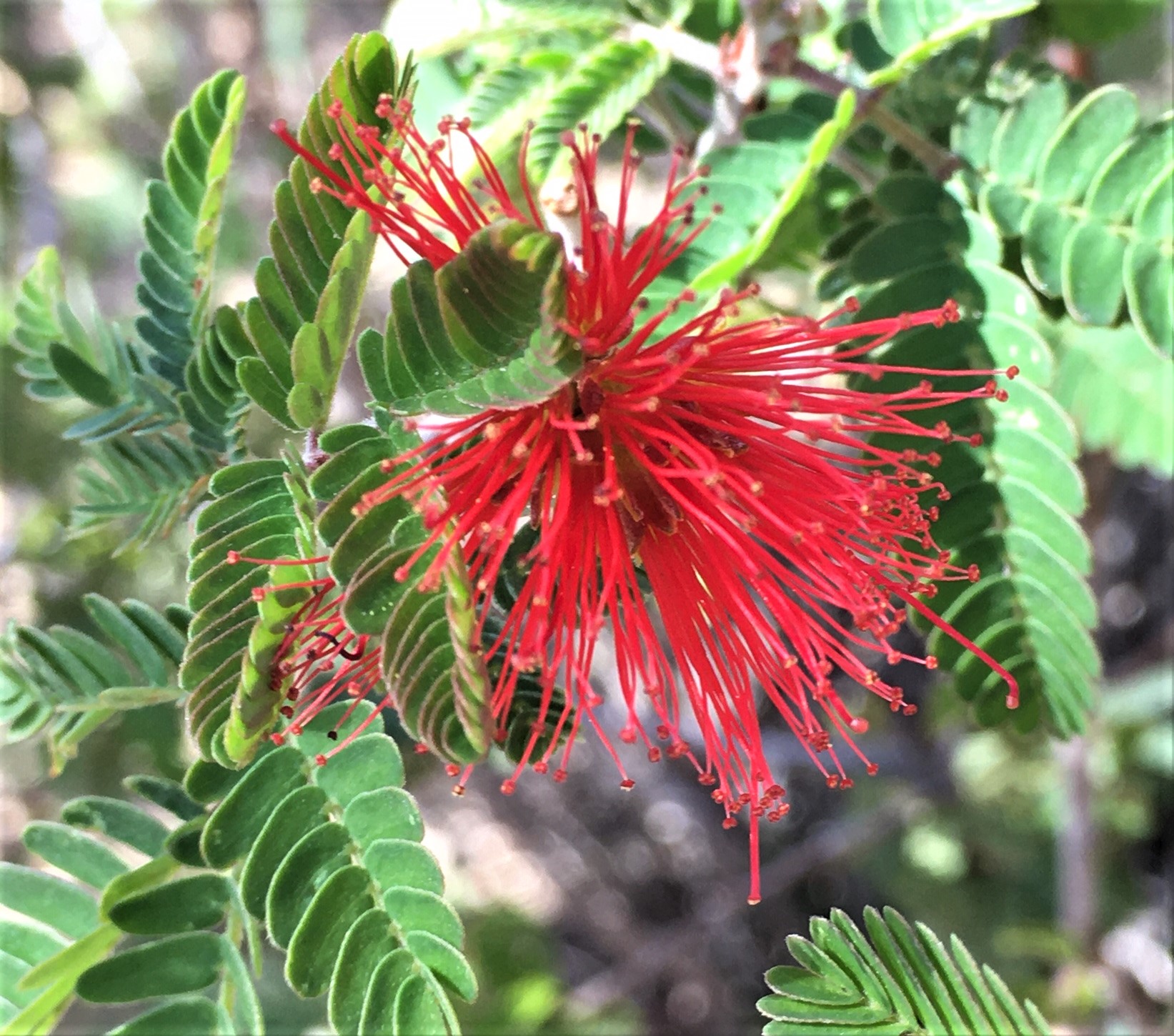
This plant is called a Fairy Duster, which I think is a delightful name. The mini brush-like stamens do look like a household duster that a tiny tidy fairy might use. The plant belongs to the pea family, Fabaceae, which also includes mimosas and acacias. That is more evident during the last phase of the blooming process when they put out small pea-like pods.
The scientific name for the Fairy Duster family is Calliandra, abbreviated in the species name as just “C.” They can be found in both the grasslands and the deserts of California, Arizona, New Mexico, Texas and Mexico. The showiest parts of the flower are the clusters of straight stamens which surround the smaller buds. They grow to about one inch long and are the origin of the scientific name Calliandra which means “beautiful stamens.”
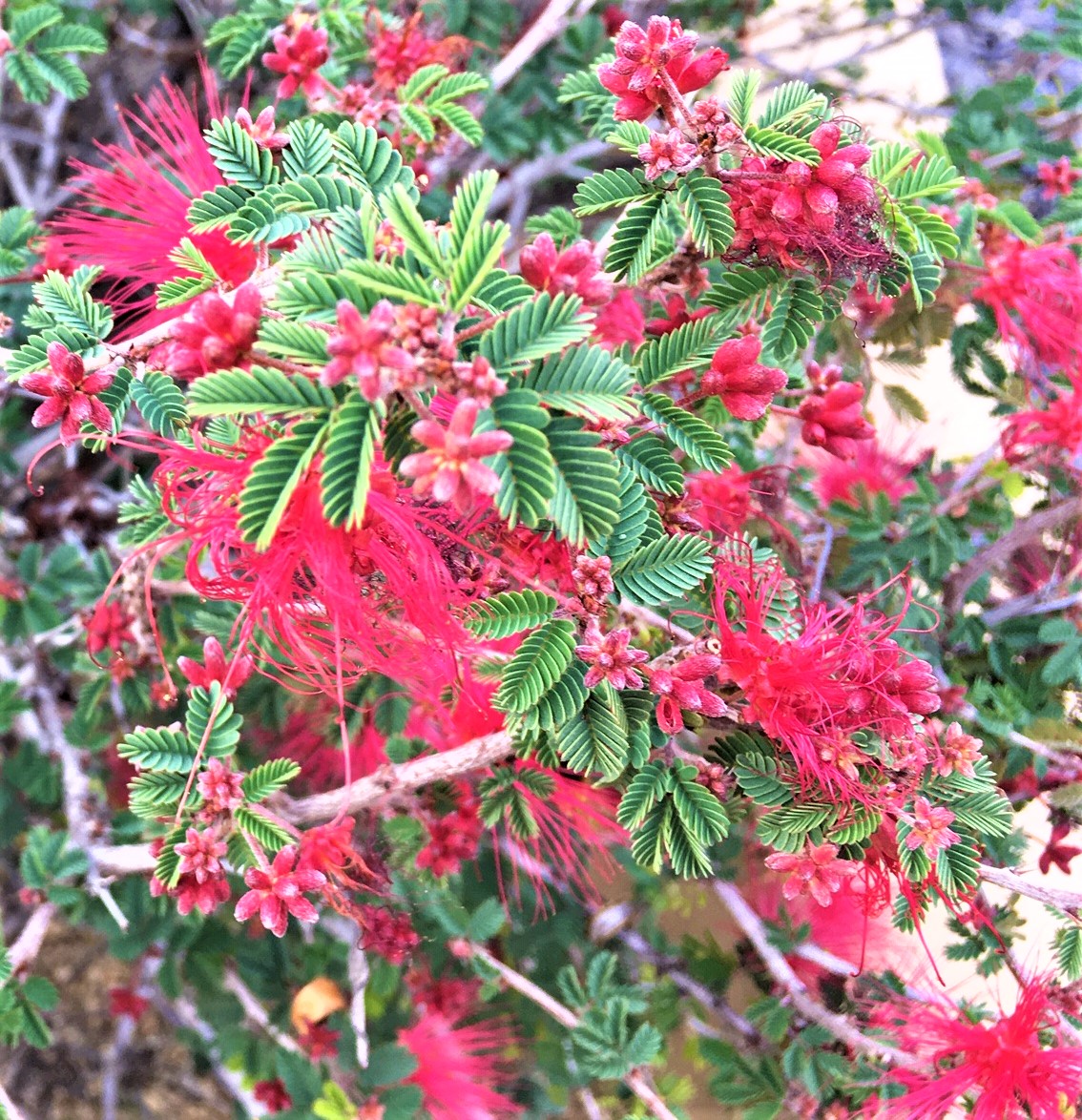
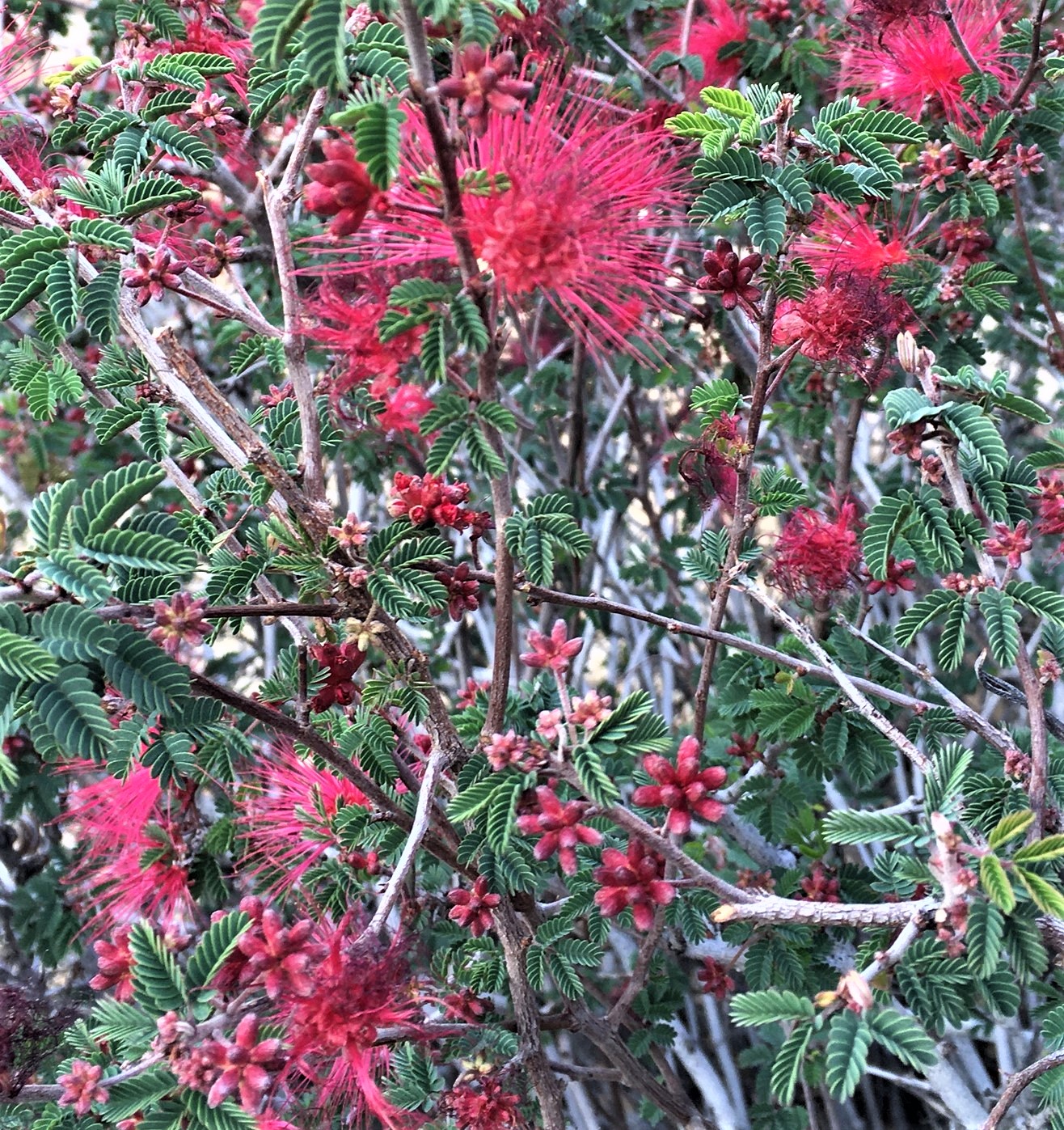
Three species are native to the southwest. C. Eriophylla, also called false mesquite, has light pink to rose colored flowers. C. Penninsularis is known as the La Paz Fairy Duster. It has red flowers and is the least common of the species. C. Californica or the Baja Fairy Duster has bright red to brilliant scarlet flowers and is the one that lives in my yard.

The Fairy Duster’s claim to fame is that it is amazingly drought resistant. The Baja variety likes full sun, although it tolerates partial shade, and gets along with little moisture. It also blooms most of the year.
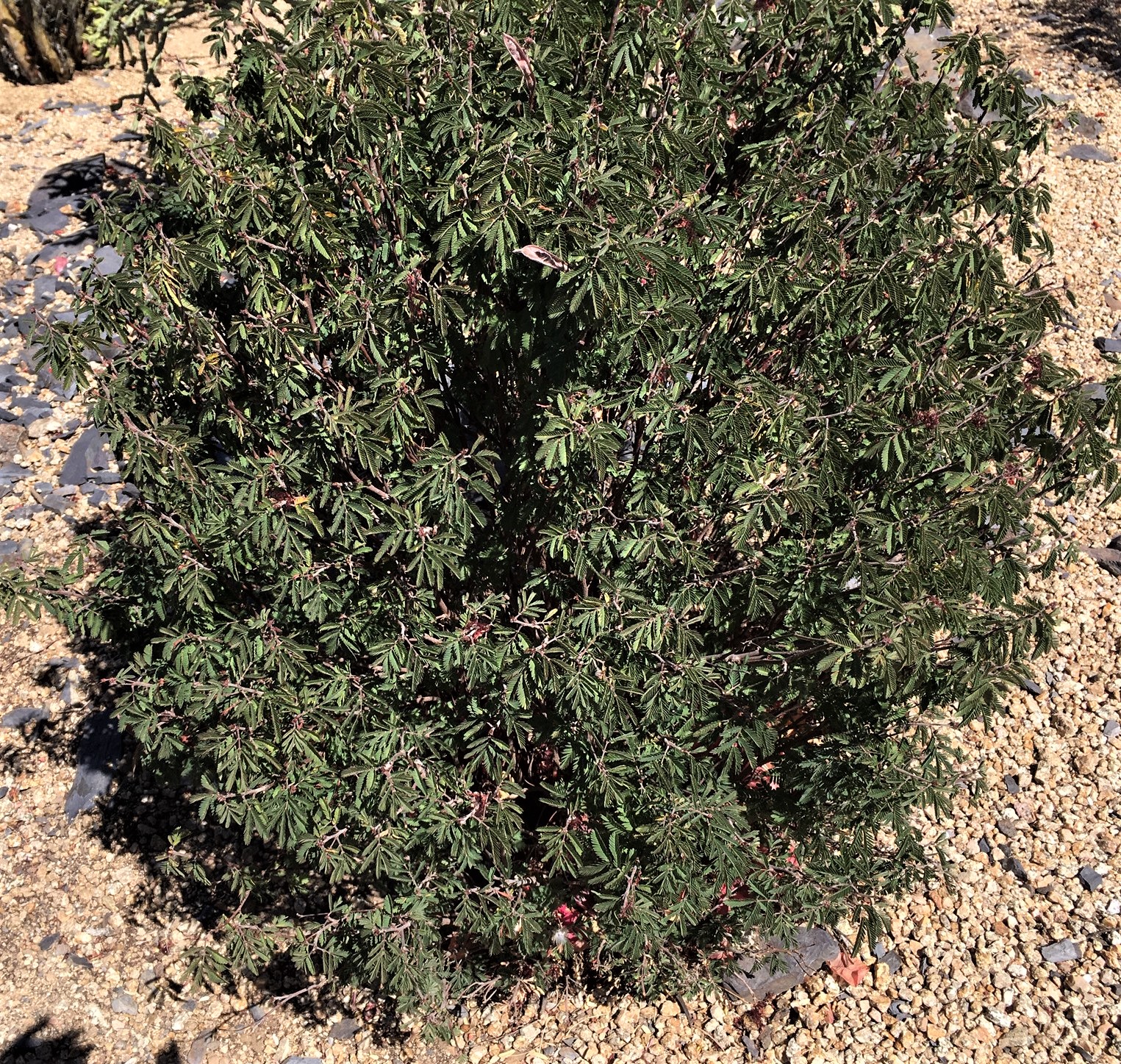
If there is any rain, it often starts blooming in the fall; really shows off in winter and early spring; and is still putting out a few blossoms mid-summer. The only things it really doesn’t like is cold – anything below 20 degrees — or super dry summers when it gets no watering. Then it quits blooming and may even drop all its leaves.
Similarly, to the Bougainvillea, the Fairy Duster protects its flowers from begin eaten up completely by spikey stamens near the blossoms. However, it has no thorns on the woody stems. The plant grows from 3 to 5 feet tall and 4 to 6 feet wide. It keeps a rounded shape with little pruning, although sometimes the woody stems can get a little unruly.
Fairy Dusters are a great favorite of hummingbirds who will often become quite territorial over a specific plant. Hummingbirds are actually quite feisty. The Fairy Dusters also produce nectar which attracts butterflies and bees, and some grazers munch on the leaves.
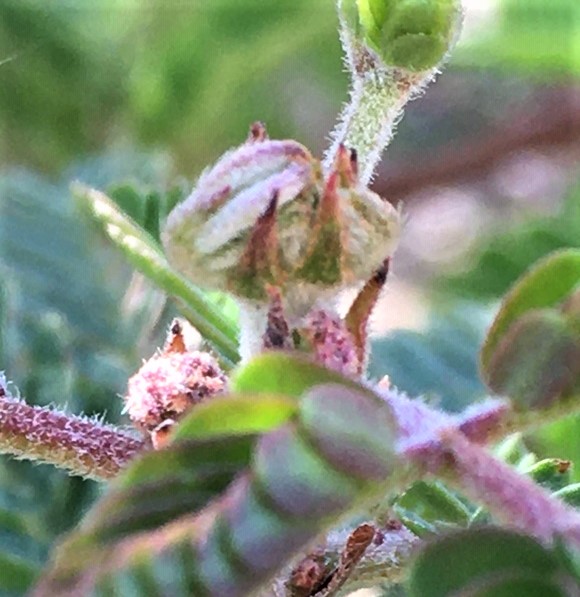
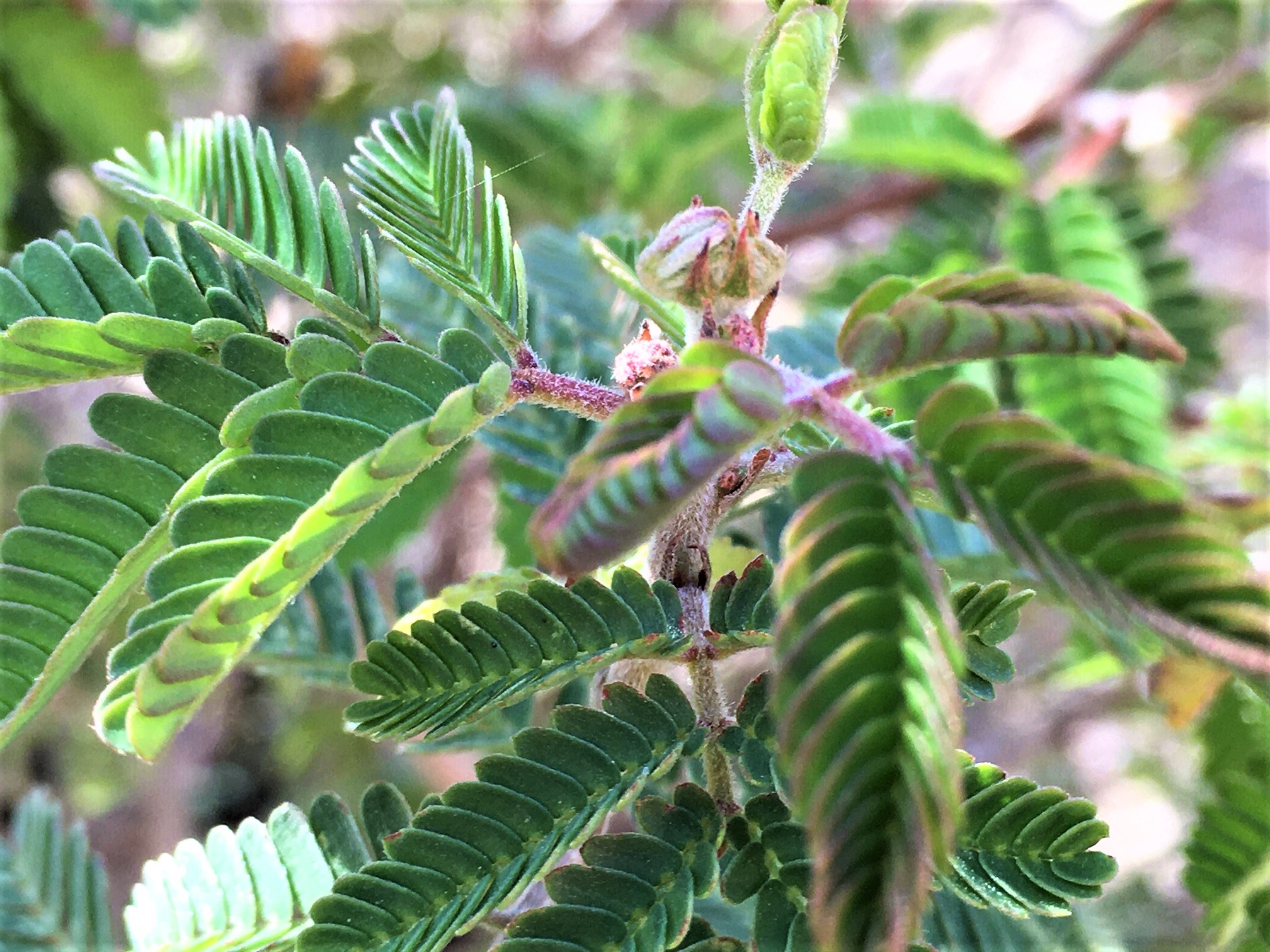
The leaves on the Baja Fairy duster are bi-pinnate leaflets which just means the tiny leaves grow opposite each other on woody stems. These evergreen leaflets have a feathery look. In warmer weather, they cleverly close slightly on hot nights to conserve water.
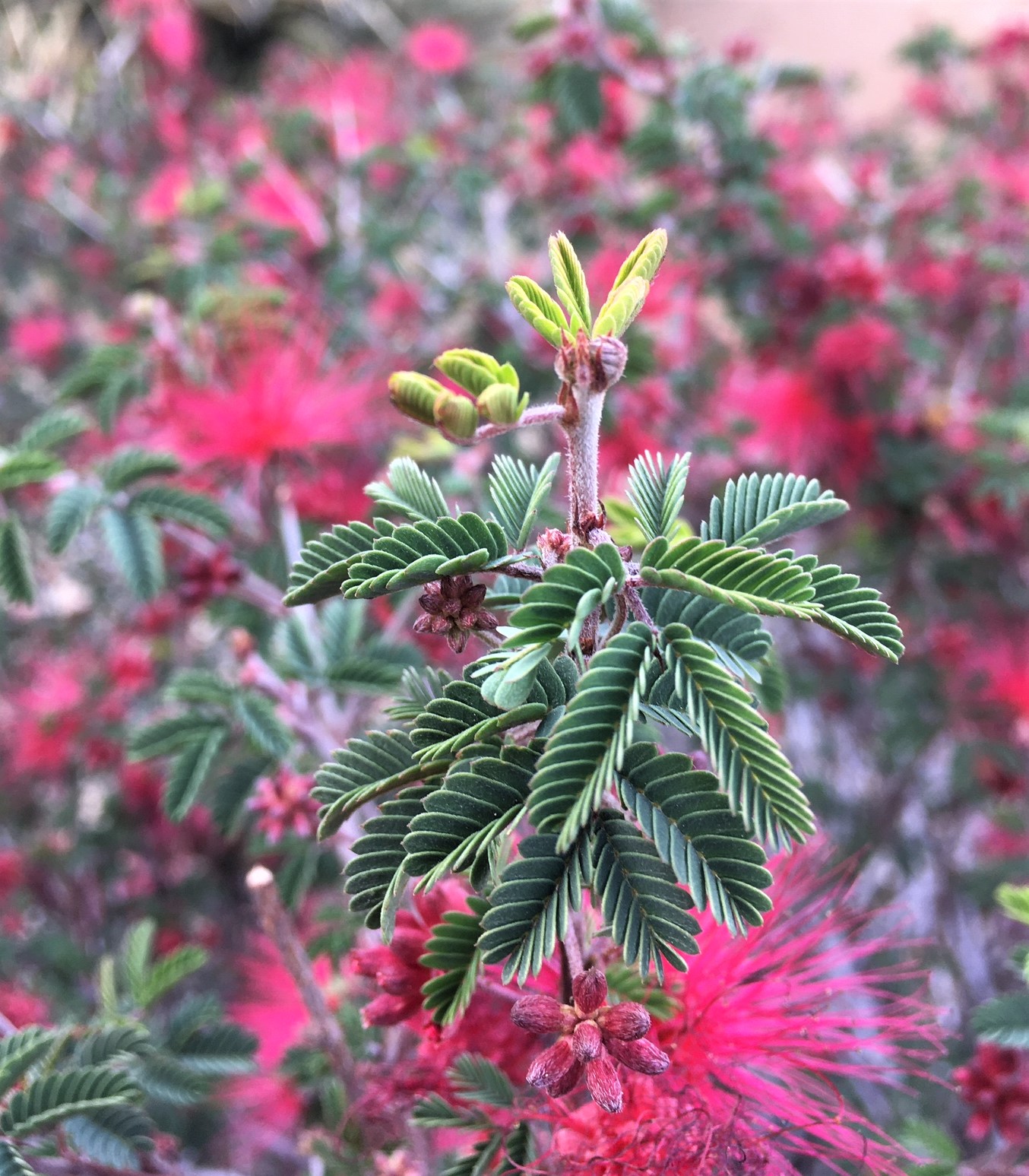
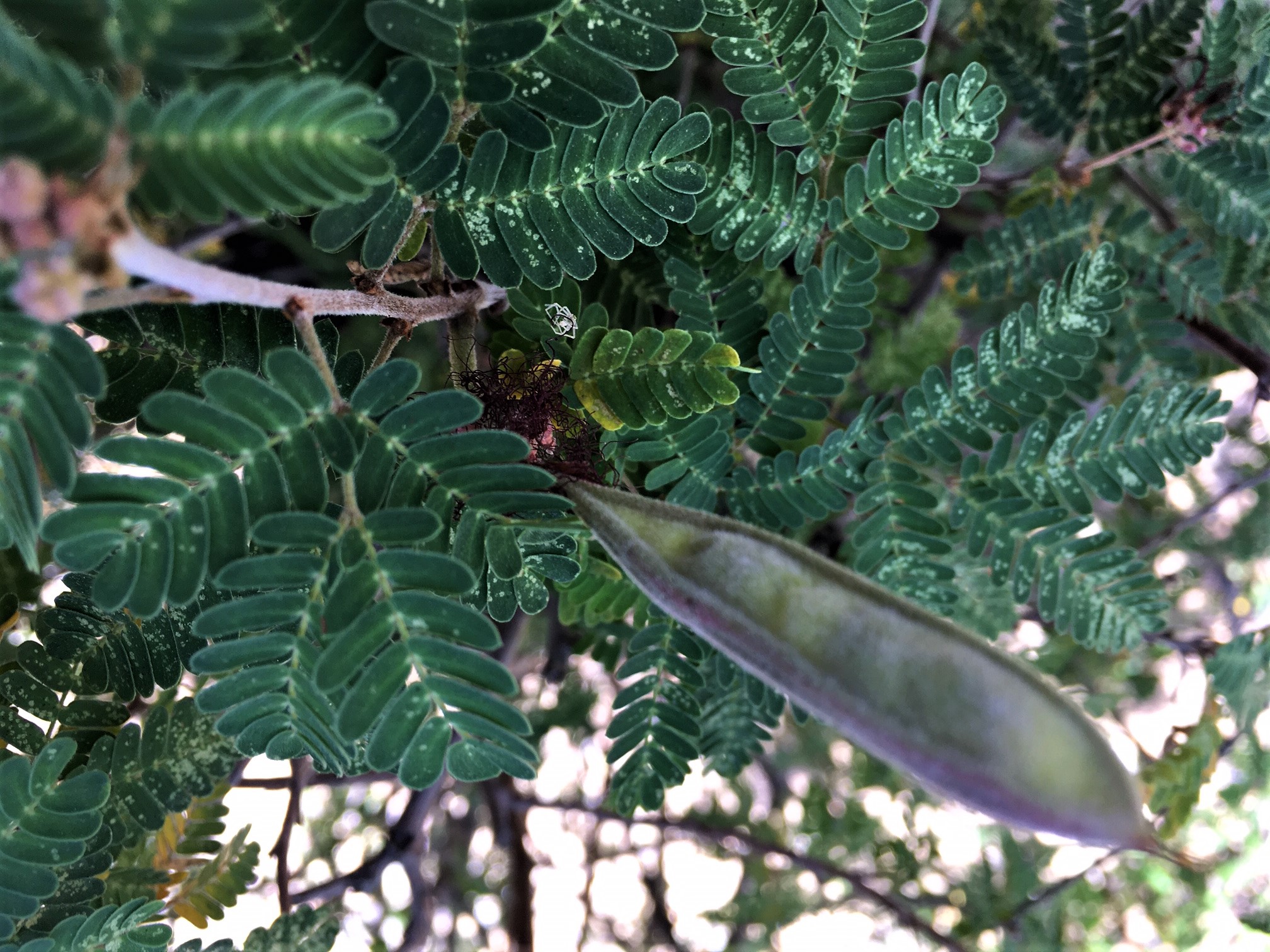
Fairy Dusters propagate themselves by the seed pods which develop after the blooms. The dried pods are flat and light brown, and the seeds are bean-like.
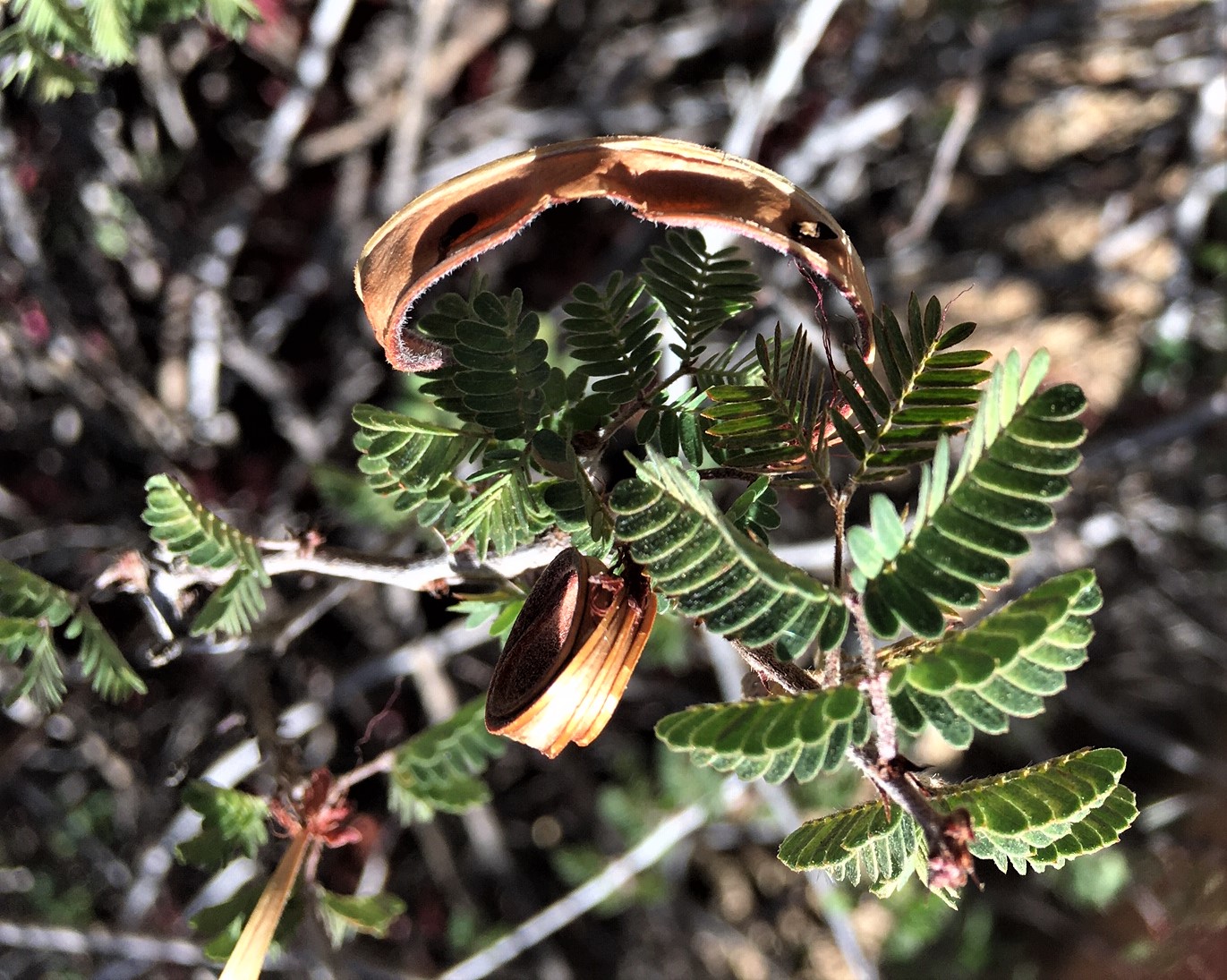
Sometimes the pods open almost explosively in an attempt to fling the seeds as widely as possible. Unfortunately, quail and other small birds often gobble up the seeds before they have a chance to dig into the soil and germinate.
I didn’t find any evidence that the Fairy Duster is used as either a food source or a medicine for humans. It is not poisonous to either people or animal, and it can be used as a flower essence taken internally according to a website called Alchemy of the Desert. They say, “Fairy Duster balances the tendency to swing between high and low energy states … it is excellent for nervous excitability and over-reactivity to stimuli.” If you’d like to know more, check them out.
